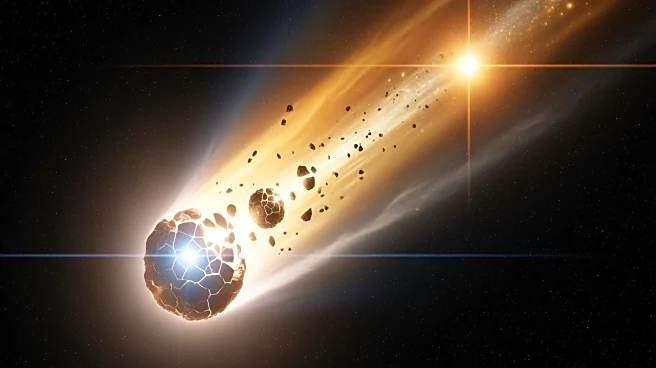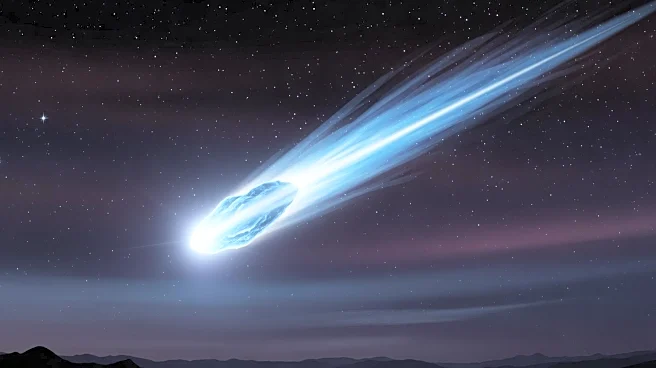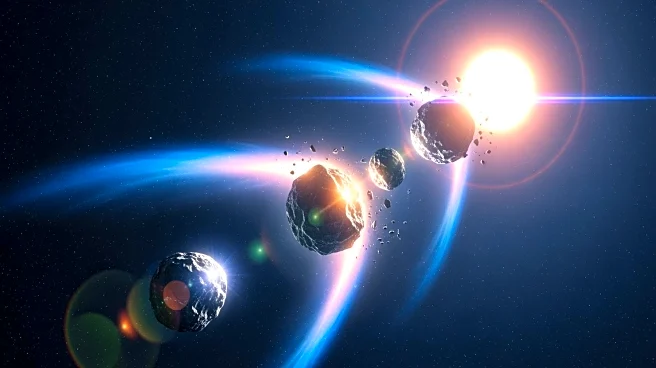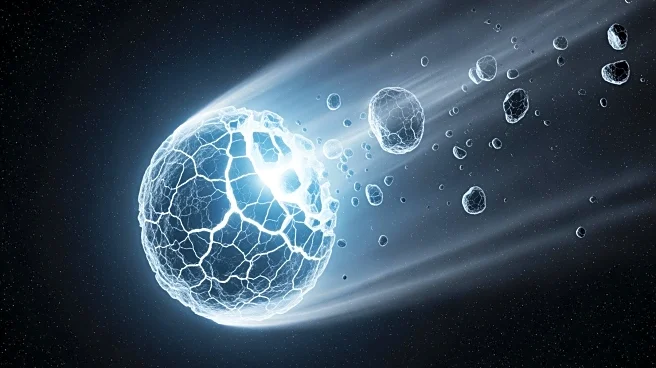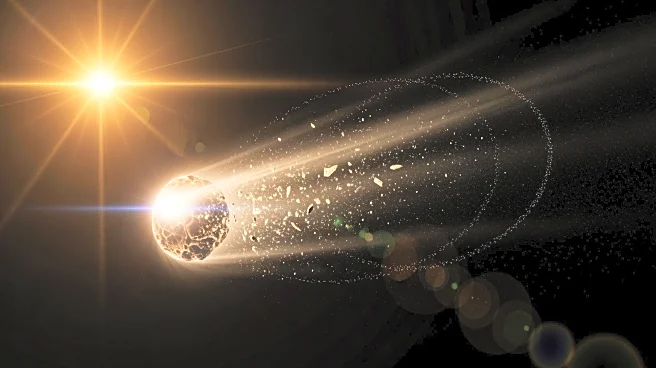What's Happening?
Comet C/2025 K1 (ATLAS) has begun to break apart following its close approach to the Sun, as observed by astronomers at Italy's Asiago Observatory. High-resolution images captured the comet's nucleus splitting
into separate pieces, indicating severe internal pressure. Italian astronomer Mazzotta Epifani confirmed the fragmentation into two similarly-sized fragments, with a third dimmer piece suggesting a complex breakup. The breakup likely started after the comet's perihelion pass on October 8, when intense solar heat caused rapid sublimation and structural collapse. The comet's origins in the Kuiper Belt make this fragmentation significant, offering a rare opportunity to study pristine matter from the early solar system.
Why It's Important?
The breakup of C/2025 K1 ATLAS provides scientists with a unique chance to examine the composition and behavior of long-period comets, which can yield insights into the solar system's formation and evolution. The event underscores the fragility of first-time comets from the Kuiper Belt, highlighting the challenges they face when encountering the Sun's intense heat. As observatories worldwide race to gather data, the scientific community anticipates valuable findings that could enhance our understanding of cometary dynamics and the solar system's history.
What's Next?
Astronomers will continue to monitor the fragments of C/2025 K1 ATLAS as they drift apart, aiming to collect detailed data before the remains disperse further into space. Observatories are expected to focus on analyzing the composition and trajectory of the fragments, which could provide new insights into the nature of Kuiper Belt objects. The scientific community remains engaged in studying the implications of this breakup, with potential discoveries that could inform future comet research and exploration.
Beyond the Headlines
The fragmentation of C/2025 K1 ATLAS highlights the importance of international collaboration in astronomical research, as observatories across the globe contribute to understanding this rare event. It also emphasizes the need for advanced observational technologies to capture and analyze transient celestial phenomena. The event serves as a reminder of the dynamic and unpredictable nature of the cosmos, encouraging continued exploration and study of the universe's mysteries.
